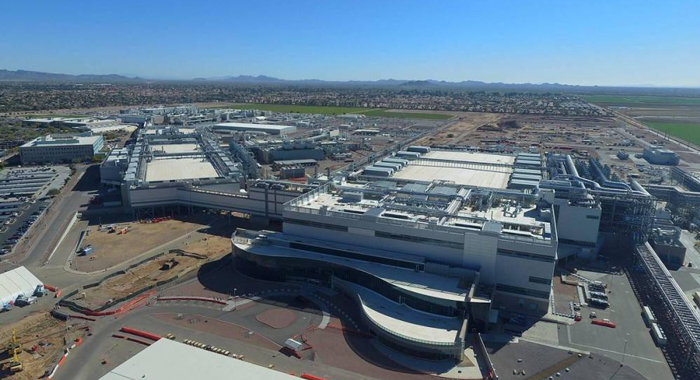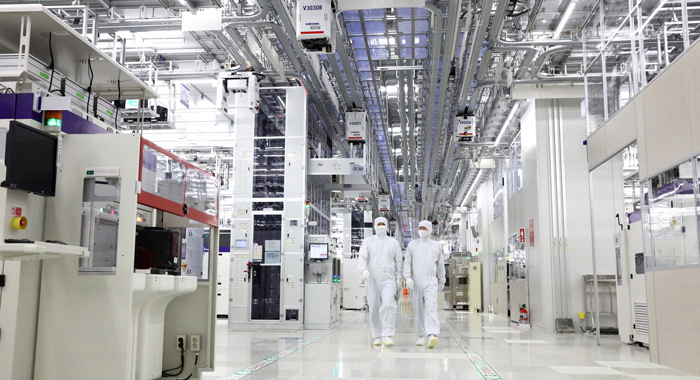The semiconductor industry has experienced a trough period for more than a year and has finally seen a recovery, and major chip manufacturers have also begun to prepare for the next upward cycle.
The reconstruction of the global semiconductor industry chain is underway. With subsidies from governments of various countries, major semiconductor foundries have begun a new round of factory construction and production expansion, expanding their layout to seize the market.
This article mainly takes stock of manufacturers’ recent production expansion and factory construction plans.
Affected by geopolitics, the 'anti-globalization' of the semiconductor industry has intensified. Localized production has become an important direction for the semiconductor policies of various governments. At present, the United States, Japan, Europe, India, and other countries and regions are releasing preferential policies to attract investment from chip giants.
$8.5 Billion Subsidies For Intel
According to a press release from the U.S. Department of Commerce on March 20, the $8.5 billion in financial subsidies Intel received will be used to support the construction of multiple semiconductor projects in four states in the United States. In addition, Intel expects to invest more than $100 billion in four states over the next five years.

Source From Internet
A series of plant construction and renovation plans include:
Construction of two new cutting-edge logic fabs and modernization of an existing fab in Chandler, Arizona, to significantly increase cutting-edge logic capacity.
Converting two plants into advanced packaging facilities in Rio Rancho, New Mexico.
Construction of two leading logic plants in New Albany, Ohio.
$6.6 Billion Subsidies For TSMC
The U.S. Department of Commerce announced on April 8 that it had reached a preliminary agreement with TSMC. US$6.6 billion in financial subsidies for the construction of TSMC’s three wafer fabs in Arizona. TSMC’s investment in Arizona will increase to $65 billion.
Among the three factories, the first wafer factory is expected to start production using the 4nm FinFET process in the first half of 2025. In addition to the previously announced 3nm technology, the second wafer fab will also adopt 2nm process technology. The planned third wafer fab to be built will produce chips with 2nm or more advanced process technology according to customer needs. The three factories will meet product demand in areas such as 5G/6G smartphones, autonomous vehicles, and artificial intelligence data center servers.
TSMC is the world's largest semiconductor chip manufacturer, with a wafer foundry market share of 56.4%. Ninety percent of cutting-edge chips are produced by TSMC. Major customers include Apple and Nvidia.

Source From TSMC
In recent years, against the background of geopolitical disputes and sharp growth in artificial intelligence-related demand, TSMC has been expanding its production facilities and adjusting its domestic and overseas factory plans accordingly, investing and setting up factories in the United States, Japan, Germany, and other countries.
However, it faced some obstacles in the process of setting up a factory in the United States, including unstable subsidies and manpower shortages, which delayed the plan. TSMC Chairman Liu Deyin said in an investor conference call in February this year that the Arizona factory will begin mass production of the 4nm process in the first half of 2025, providing the same level of manufacturing quality and reliability as Taiwan's wafer factories.
It is not yet certain when the third plant will be built.
In addition, boosted by strong demand for AI chips, the world's largest chip foundry TSMC's first-quarter net profit was better than expected, achieving its first growth in a year.
According to the performance report for the first quarter of 2024 as of March 31, net profit in the first quarter was NT$225.5 billion (approximately US$6.976 billion), estimated at NT$214.91 billion, a year-on-year increase of 8.9%, the fastest growth in more than a year. Speed; first-quarter sales were NT$592.64 billion (approximately US$18.333 billion), a year-on-year increase of 17%, with an estimated sales of NT$583.46 billion. Operating profit in the first quarter was NT$249.02 billion (approximately US$7.7 billion), a year-on-year increase of 7.7%, and is estimated to be NT$240.87 billion.
Given TSMC's key role in the chip manufacturing industry, the company's earnings are largely seen as a bellwether for global chip demand. Next, TSMC stated that it will continue to use its advantages in mass production to focus on R&D breakthroughs in advanced process technology.
$6.4 Billion Grant To Samsung
On April 15, the U.S. Department of Commerce announced a $6.4 billion grant to Samsung Electronics to expand its chip production in Texas. On this basis, Samsung will also invest more than US$40 billion to expand its existing factory in Austin, Texas, and expand FD-SOI (fully depleted silicon-on-insulator) process capacity. In addition, Samsung will build a comprehensive advanced manufacturing ecosystem in Tyler, Texas, including the construction of two 4nm and 2nm wafer foundries, an R&D base, and a 3D HBM memory and advanced packaging factory of 2.5D packaging facility.

Source From Internet
In addition, driven by the recovery in demand and the bottoming out of prices, storage manufacturers have restored production capacity and reported impressive financial results in the latest quarter.
On April 5, Samsung Electronics announced profit guidance showing that first-quarter revenue rose to approximately 71 trillion won, a year-on-year increase of 11%; operating profit was approximately 6.6 trillion won, a year-on-year increase of 931%, which is Samsung Electronics’ highest profit since 2022. The highest operating profit since the third quarter of 2019.
According to reports, the wafer output of Samsung Electronics' NAND Flash production lines in Pyeongtaek, South Korea and Xi'an, China, will increase by about 30% in the first quarter of this year compared with the previous quarter. However, Samsung remains cautious about further production increases, hoping to avoid affecting the price increase of NAND Flash.
In terms of DRAM, according to a report by market research organization Omdia, Samsung Electronics has increased its average monthly DRAM wafer investment in the second quarter of this year to 600,000 pieces, a month-on-month increase of 13%; it is expected that DRAM wafer investment will increase in the second half of the year. Increased to 660,000 pieces, DRAM production returned to pre-cut levels.
HBM's production expansion exceeds expectations. Samsung Electronics executives said at the "Memcon 2024" global semiconductor conference that Samsung's HBM chip production this year is expected to increase 2.9 times compared with last year, higher than the 2.4 times predicted at the beginning of the year.
Conclusion
The U.S. Department of Commerce said that by 2030, the United States is expected to produce about 20% of the world's cutting-edge chips. Data show that the United States' share of global semiconductor manufacturing capacity fell from 37% in 1990 to 12% in 2020. Therefore, since the introduction of the "Chip Act" in 2022, the United States has been actively promoting the return of advanced chip manufacturing to the United States.
This subsidy mainly strengthens chip production capabilities in two aspects. On the one hand, there are advanced logic chips, high-bandwidth memory chips, and corresponding advanced packaging processes used in the field of artificial intelligence. On the other hand mature wafer foundry capabilities, mainly support chip production for the automotive and defense industries.
However, the above-mentioned manufacturers signed a non-binding preliminary terms memorandum (PMT) with the U.S. Department of Commerce, not final terms.